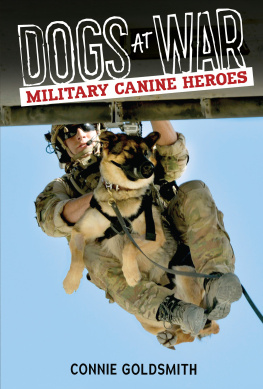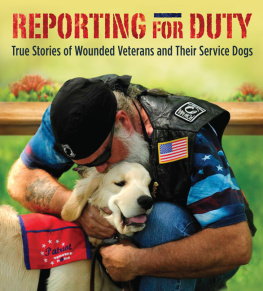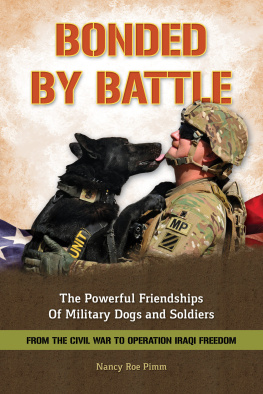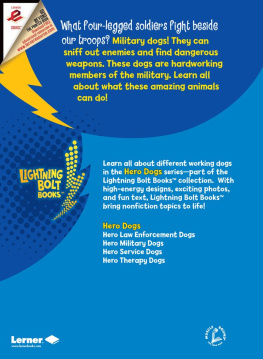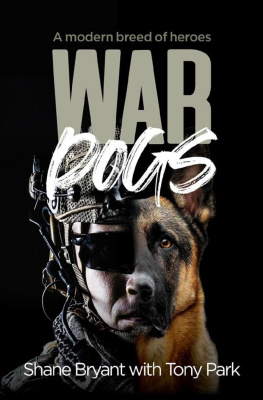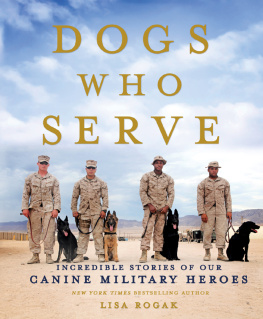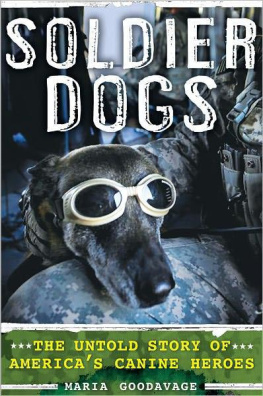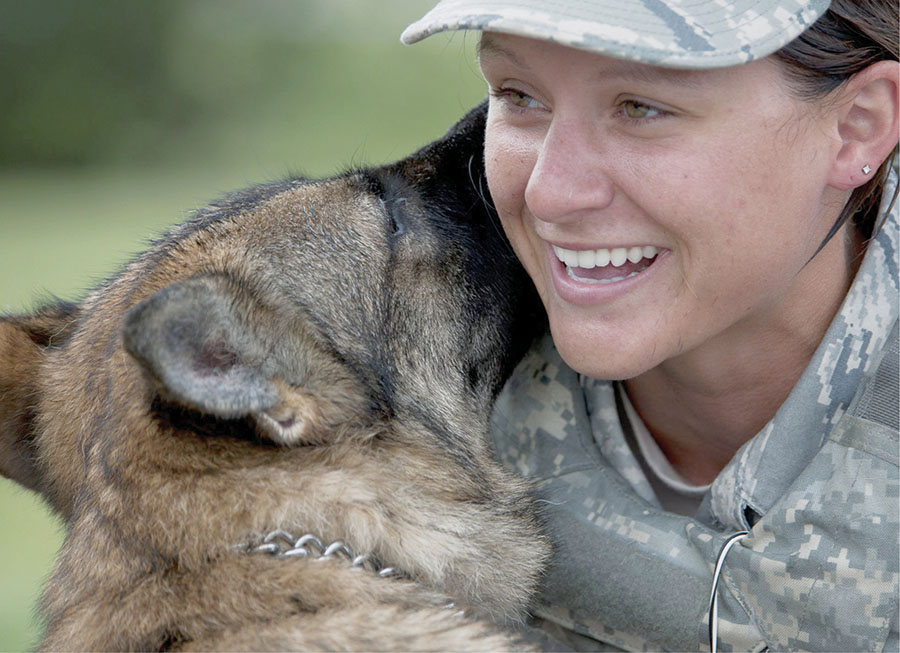Acknowledgments: The author especially wishes to thank John C. Burnam, dog handler in the Vietnam War and powerful advocate for military working dogs, for his ongoing support and assistance with this project. Thanks also go to the people who took the time to speak with me about their experience with military working dogs: Courtney Griffin, Charlie Hardesty, Lora Harrist, Dr. Stewart Hilliard, Angela Lowe, Dr. Emily Pieracci, Bret Reynolds, Karl Stefanowicz, and Dustin Weeks.
Text copyright 2017 by Connie Goldsmith
All rights reserved. International copyright secured. No part of this book may be reproduced, stored in a retrieval system, or transmitted in any form or by any meanselectronic, mechanical, photocopying, recording, or otherwisewithout the prior written permission of Lerner Publishing Group, Inc., except for the inclusion of brief quotations in an acknowledged review.
Twenty-First Century Books
A division of Lerner Publishing Group, Inc.
241 First Avenue North
Minneapolis, MN 55401 USA
For reading levels and more information, look up this title at www.lernerbooks.com.
Main body text set in Adriana Condensed 11/15
Typeface provided by Chank.
Library of Congress Cataloging-in-Publication Data
Names: Goldsmith, Connie, 1945 author.
Title: Dogs at war: military canine heroes / by Connie Goldsmith.
Description: Minneapolis : Twenty-First Century Books, [2017] | Includes bibliographical references and index.
Identifiers: LCCN 2016009413 (print) | LCCN 2016018684 (ebook) | ISBN 9781512410129 (lb : alk. paper) | ISBN 9781512428520 (eb pdf)
Subjects: LCSH: DogsWar useUnited States.
Classification: LCC UH100 .G653 2016 (print) | LCC UH100 (ebook) | DDC 355.4/24dc23
LC record available at https://lccn.loc.gov/2016009413
Manufactured in the United States of America
1-39560-21259-6/10/2016
9781512439052 ePub
9781512439069 ePub
9781512439076 mobi
Contents
chapter 1
Two dogsTwo Wars
chapter 2
The Dogs of Wars
chapter 3
The Right Dog for the Job
chapter 4
Paws on the Ground
chapter 5
Coming Home
chapter 1
Two dogsTwo Wars
Americans love their dogs. Nearly half the households in the United States own at least one dog, and many families own two or more. Dogs want to play ball with us or chase a Frisbee or chomp a special treat we give them. Theres nothing like a warm dog curled up next to us on a rainy day or a cold nose pressed against our arm when were feeling sad. All a dog asks for is to be close to its person. People who live with dogs know how deep and strong the human-dog bond goes.
We have a bond with these dogs that are as attached to us as we are to them. I have gone to war with this dog, and I would do it again in a heartbeat. I will go to the end of the world and back again for this dog, and I know he would do the same.
Joel Townsend, handler for military working dog A-Taq in the Iraq War
One of the strongest human-dog bonds is between a military working dog (MWD) and its handler. Six legs. Four eyes. Two hearts. One team. The dog and handler live together, eat together, play together, often sleep together, and risk their lives for each other every day while in a war zone. Experts say each military dog saves between 150 to 200 soldiers during its working life. It does so by sniffing out concealed bombs and weapons and by alerting its handler to hidden enemy soldiers.
Meet Mike Dowling and Rex, and John Burnam and Clipper. These outstanding teams worked in two wars separated by time and space, with very different outcomes for the heroic dogs.
Staff Sergeant Stephanie Pecovsky and her military working dog take a break during a ruck march training. In this exercise, a dog learns to walk at a relatively fast pace over distance while carrying a load.
War Dog Team in Iraq: Mike and Rex
This is arguably the single most dangerous place in the most dangerous war in the world right now, Mike Dowling said, writing about the time when he and Rex climbed out of a helicopter at the US Marine base at Mahmoudiyah, Iraq, in 2004. And Rex and I have come here to do the most dangerous job in the worldtracking down the [rebels hidden stash of] arms and explosives, plus their murderous improvised explosive devices. In 2004 Mike had every reason to worry. Soldiers in the US-led Iraq War (20032011) called this camp the capital of Iraqs Triangle of Death, an area south of Baghdad known for horrific violence.
Mike was twenty-two years old when he joined the US Marines in 2001. He served in the marines until 2005 and in the US Army Reserve from 2008 to 2010. His partner Rex came to the United States as a puppy from one of the top German shepherd breeders in Europe. Rex went through the US militarys dog training school at Lackland Air Force Base in San Antonio, Texas, where he learned to identify and locate explosives by scent. On graduation, Rexs report card said, Rex is an independent dog who will search of his own accord if the handler allows it. He has excellent odor recognition and will track the odor until he pinpoints source.
Rex was eighteen months old when he and Mike teamed up at Marine Corps Base Camp Pendleton in Southern California in November 2002. Over the next year, they completed their training and certification as a patrol and explosives detection dog (PEDD) team. A PEDD dog like Rex excels at guarding US military bases around the world from intruders. The dog also finds weapons, explosives, and bomb-making chemicals. Rex could catch and hold a suspect or enemy terrorist by chasing him, knocking him down, and clenching the persons clothing or a limb with his teeth. Few people resist when an aggressive 70-pound (32-kilogram) dog holds them down! The US military spends $50,000 or more to train a military working dog to this high level of excellence. By tradition, the military assigns these dogs a higher rank than their handlers to encourage the handler to treat their superior officer with the respect to which the dog is entitled.
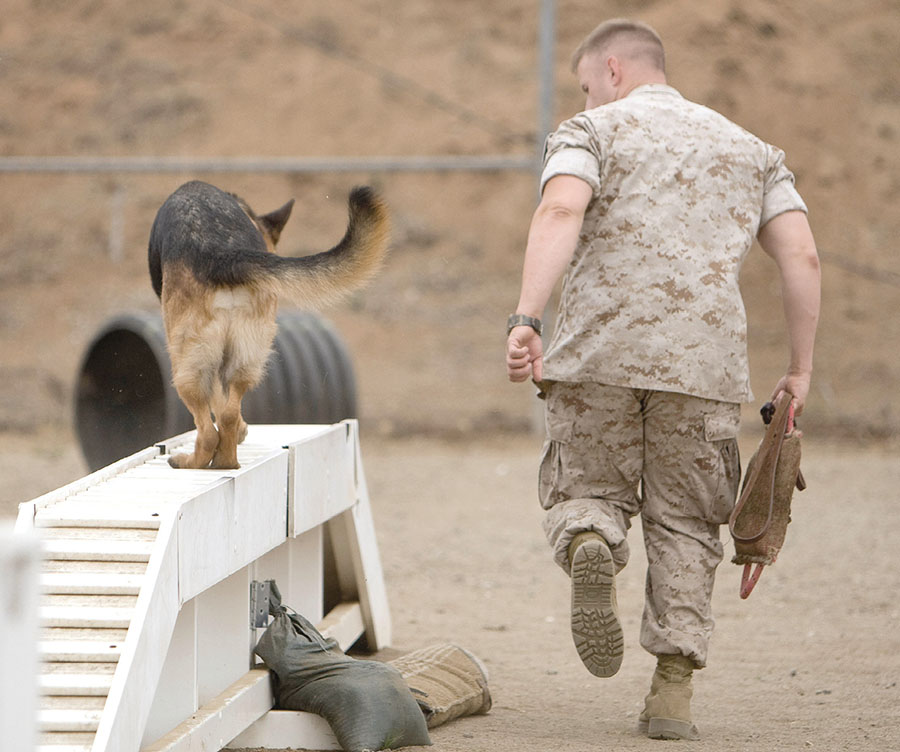
The Camp Pendleton military base in California has a facility for training dogs for deployment into Iraq and Afghanistan. The dogs and their handlers are trained for duties such as detecting explosives and narcotics and tracking suspects. Here, a dog learns to master a narrow bridgelike structure.
Off to War
The Camp Pendleton kennel masterthe soldier in charge of everything the dogs and their handlers need, including their medical care, feeding, and housing at a particular military basetold Mike and the other handlers in November 2003 that they would soon be deployed to Iraq. US military leaders realized that the nature of twenty-first-century warfare had changed from previous eras. No longer were armies dressed in different, identifiable uniforms. No longer were armies fighting each other openly on defined battlefields. Instead, US soldiers in the war in Iraq and in the war in Afghanistan (20012014) faced terrorists and enemy insurgents (rebels fighting against an established government). Typically these fighters wore civilian clothing and hid among local residents. From rooftops and distant hillsides, enemy snipers targeted American soldiers, whose desert camouflage outfits were distinctive. The enemy also built deadly improvised explosive devices (IEDs) and used them to injure and kill American soldiers. These devices, constructed of simple explosive materials, were usually hidden in rubble along roads, under bridges, or inside deserted houses.

